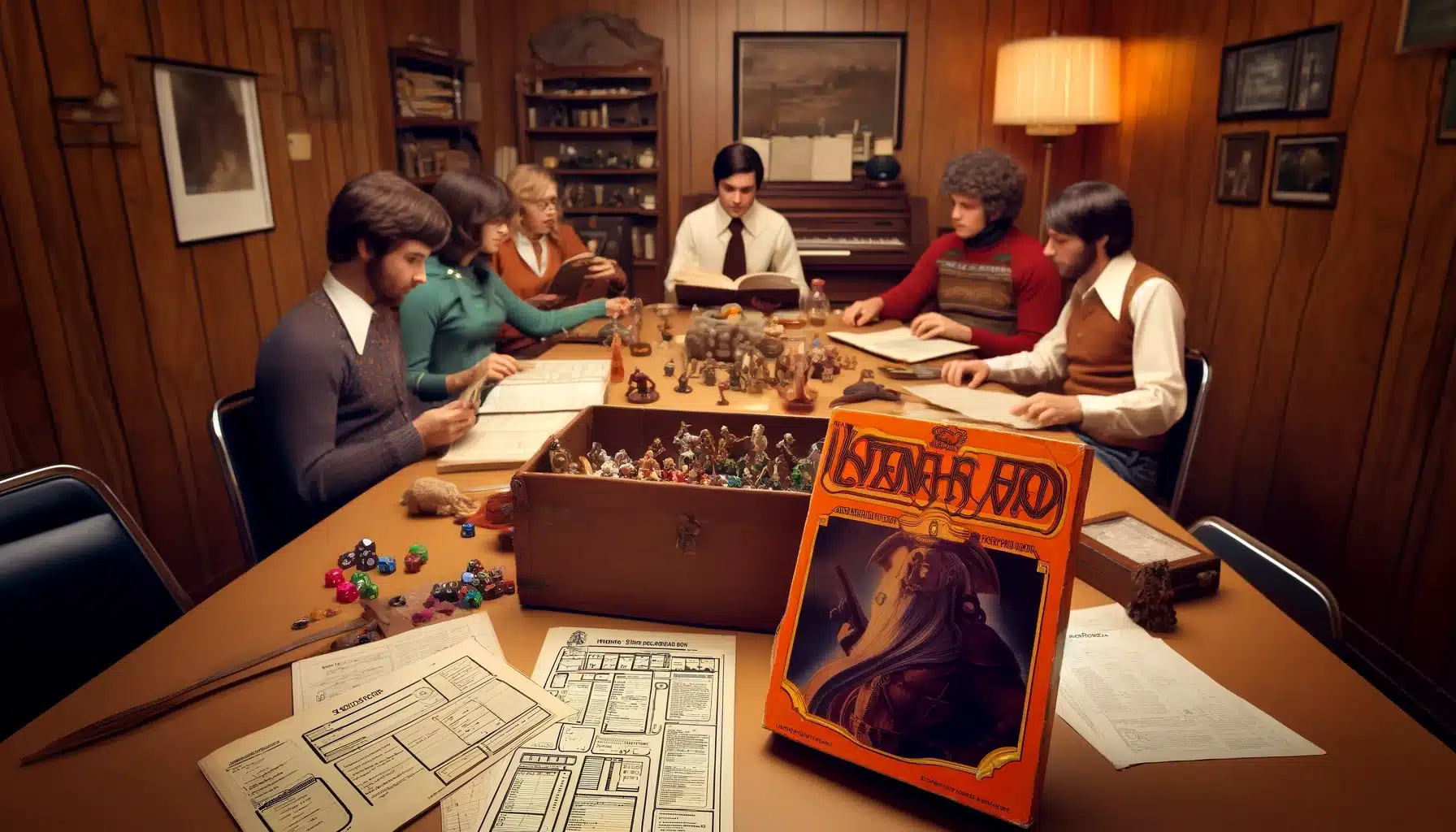As someone who has been a Dungeon Master since the inception of Dungeons & Dragons in 1974, I’ve had the unique pleasure of witnessing the evolution of this iconic game firsthand. Over the past 40 years, D&D has undergone significant changes, each edition bringing something new to the table while staying true to the spirit of adventure and imagination that defines the game. Let’s take a journey through the different editions of D&D and explore how each has shaped the game we know and love today.
From the humble beginnings of the Original Dungeons & Dragons (OD&D) to the sophisticated mechanics of the latest 5th Edition, every iteration has introduced innovations and refinements. As a DM, adapting to each new edition has been an exciting challenge, offering fresh opportunities to enhance storytelling, engage players, and create memorable campaigns. Each version has its unique flavor, catering to different playstyles and preferences, ensuring that D&D remains a versatile and ever-evolving game.
The early days of OD&D were characterized by simplicity and a sense of limitless potential. With just three core books, the game was a blank canvas, allowing players and DMs to create their own worlds and adventures. As the game grew in popularity, Advanced Dungeons & Dragons (AD&D) brought more structure and complexity, standardizing gameplay and expanding the game’s lore with rich settings and detailed mechanics.
Each subsequent edition has built upon this foundation, refining and expanding the rules to make the game more accessible, balanced, and immersive. From the introduction of the d20 System in 3rd Edition to the tactical combat focus of 4th Edition and the storytelling emphasis of 5th Edition, D&D has continually evolved to meet the needs and desires of its players.
Original Dungeons & Dragons (OD&D)
The birth of Dungeons & Dragons in 1974 was a revolutionary moment in gaming history. Created by Gary Gygax and Dave Arneson, OD&D introduced players to a new world of fantasy role-playing. The original edition was released as a boxed set containing three small booklets: Men & Magic, Monsters & Treasure, and Underworld & Wilderness Adventures. This minimalist approach provided a framework for creativity and imagination, allowing players and Dungeon Masters to build their own adventures from the ground up.
OD&D was characterized by its simplistic rules and open-ended gameplay. With a focus on exploration and storytelling, players could create their own characters and embark on adventures in a limitless fantasy world. The game encouraged a high degree of customization, with Dungeon Masters often inventing new rules and scenarios to fit their campaigns. This edition laid the foundation for all future versions of D&D, establishing core concepts such as character classes, levels, and hit points that would become staples of the game.
Try my AI Tabletop RPG generators...and an extensive library of content!
Overview
The birth of Dungeons & Dragons (OD&D) in 1974 marked the beginning of a new era in gaming. Created by Gary Gygax and Dave Arneson, OD&D was the first tabletop role-playing game, introducing players to a world of fantasy and imagination. The game was initially published as a boxed set containing three small booklets: Men & Magic, Monsters & Treasure, and Underworld & Wilderness Adventures.
Key Features
OD&D was known for its simplistic rules, which provided a foundation for creativity and imagination. The three core books included:
- Men & Magic: Covered character creation, spells, and basic rules.
- Monsters & Treasure: Detailed various creatures and treasures players could encounter.
- Underworld & Wilderness Adventures: Provided guidelines for creating dungeons and wilderness adventures.
This edition encouraged players and Dungeon Masters to invent their own rules and settings, fostering a sense of limitless possibilities.
Legacy
OD&D laid the groundwork for all future editions of Dungeons & Dragons. Its open-ended approach allowed for a high degree of customization, which became a hallmark of the game. The core concepts introduced in OD&D, such as character classes, levels, and hit points, have persisted throughout the game’s evolution, influencing countless other role-playing games.
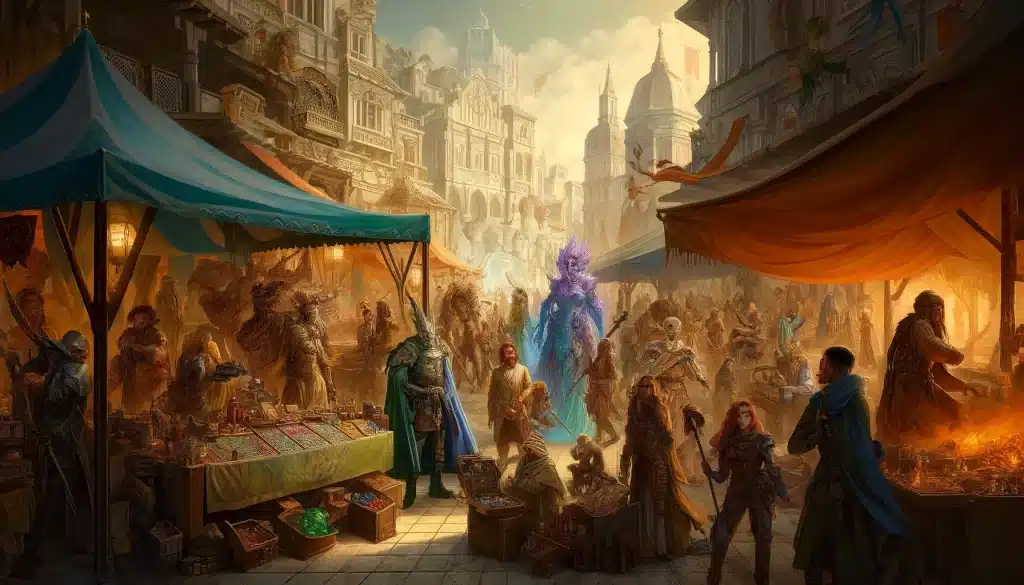
Advanced Dungeons & Dragons (AD&D) 1st Edition
By 1977, D&D had grown in popularity, and the need for a more comprehensive ruleset became apparent. Enter Advanced Dungeons & Dragons (AD&D) 1st Edition, designed by Gary Gygax. This edition aimed to standardize gameplay and provide a more detailed framework for both players and Dungeon Masters. It was released as a series of hardcover books, including the Player’s Handbook, Dungeon Master’s Guide, and Monster Manual.
AD&D 1st Edition brought a new level of complexity and depth to the game. It introduced more detailed character classes, expanded spell lists, and a comprehensive combat system. This edition also laid the groundwork for the rich lore and intricate worlds that D&D would become known for. Players could now delve deeper into their characters’ development and the vast settings created by their Dungeon Masters, making the game more immersive and engaging.
⚔️ Fantasy RPG Random Tables Books
Make life as a Gamemaster easier…
If you play Dungeons & Dragons, Pathfinder, or other fantasy RPGs, this
RPG random tables series
is packed with encounters, NPCs, treasure, and more. Available in eBook or print—either way, you’ll have a wealth of adventure ideas at your fingertips.
Overview
Released in 1977, Advanced Dungeons & Dragons (AD&D) 1st Edition brought a new level of complexity and detail to the game. Designed by Gary Gygax, this edition aimed to standardize the rules and provide a more comprehensive framework for gameplay. AD&D quickly became the definitive version of D&D for many players, solidifying its place in the gaming world.
Key Features
AD&D 1st Edition introduced more complex rules and expanded character options. Key features included:
- Expanded Character Classes: More detailed descriptions and options for classes such as fighters, magic-users, and clerics.
- Detailed Combat System: Introduced more intricate combat rules, including armor class and hit dice.
- Rich Lore: Added depth to the game world with detailed descriptions of monsters, spells, and magic items.
Impact
AD&D 1st Edition standardized gameplay, making it easier for players to understand and follow the rules. This edition also laid the groundwork for the rich, detailed worlds that D&D is known for, inspiring countless campaigns and adventures.
Advanced Dungeons & Dragons (AD&D) 2nd Edition
The late 1980s saw the launch of Advanced Dungeons & Dragons (AD&D) 2nd Edition, which sought to refine and build upon the foundations laid by the first edition. Released in 1989, this edition aimed to streamline the rules and make the game more accessible to a wider audience. It introduced a variety of new campaign settings, each with its own unique flavor and setting, adding depth and diversity to the D&D universe.
AD&D 2nd Edition became known for its emphasis on storytelling and character development. It removed some controversial elements from the game, making it more family-friendly and appealing to a broader audience. This edition also saw the introduction of non-combat skills and proficiencies, allowing for more role-playing opportunities and character customization. As a result, AD&D 2nd Edition became a favorite among many players, setting the stage for future editions.
Overview
Launched in 1989, Advanced Dungeons & Dragons (AD&D) 2nd Edition refined and expanded upon the foundations laid by its predecessor. This edition aimed to streamline the rules and make the game more accessible to a broader audience. It also introduced new campaign settings that would become iconic in the D&D universe.
Key Features
AD&D 2nd Edition featured several key changes and additions:
- Streamlined Rules: Simplified and clarified many of the rules from the 1st Edition.
- New Campaign Settings: Introduced beloved settings such as Ravenloft, Dark Sun, and Planescape.
- Expanded Character Options: Added new classes, races, and specializations, allowing for greater customization.
Significance
This edition is known for its emphasis on story and character development, as well as its rich, immersive settings. It became a favorite among players and Dungeon Masters for its balance of complexity and accessibility, paving the way for modern role-playing games.
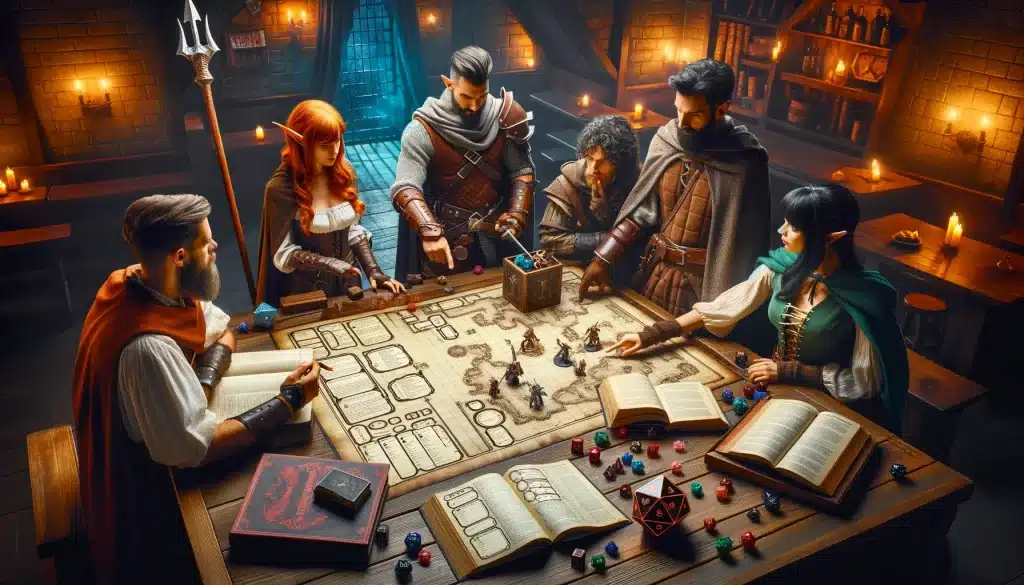
Dungeons & Dragons 3rd Edition
As the new millennium approached, Dungeons & Dragons underwent another major transformation with the release of the 3rd Edition in 2000. Developed by Wizards of the Coast, this edition aimed to modernize the game and make it more accessible to new players. The introduction of the d20 System was a significant innovation, unifying the game’s mechanics and making it easier to learn and play.
Dungeons & Dragons 3rd Edition provided greater flexibility in character creation, allowing players to customize their characters in new and exciting ways. The introduction of multiclassing and the expanded use of feats and skills provided more options for character development and strategy. This edition’s emphasis on player choice and customization set a new standard for role-playing games and paved the way for future editions.
Overview
Debuting in 2000, Dungeons & Dragons 3rd Edition marked a significant evolution in the game’s mechanics and design. Developed by Wizards of the Coast, this edition introduced the d20 System, which would become a central aspect of D&D and many other role-playing games.
Key Features
3rd Edition brought several major changes and innovations:
- d20 System: A unified system that streamlined gameplay and made it easier to learn and play.
- Flexible Character Creation: Allowed for greater customization with more options for multiclassing and feats.
- Unified Mechanics: Standardized rules across different aspects of the game, simplifying gameplay.
Advancements
The introduction of the d20 System was a game-changer, making it easier for new players to learn and play D&D. The flexibility in character creation and unified mechanics also allowed for a more streamlined and enjoyable gaming experience, setting the stage for future editions.
Dungeons & Dragons 3.5 Edition
Recognizing the need for further refinement, Wizards of the Coast released Dungeons & Dragons 3.5 Edition in 2003. This update to the 3rd Edition ruleset aimed to address player feedback and improve the overall gameplay experience. The 3.5 Edition clarified and balanced many of the existing rules, making the game more cohesive and enjoyable.
⚔️ Fantasy RPG Random Tables Books
Make life as a Gamemaster easier…
If you play Dungeons & Dragons, Pathfinder, or other fantasy RPGs, this
RPG random tables series
is packed with encounters, NPCs, treasure, and more. Available in eBook or print—either way, you’ll have a wealth of adventure ideas at your fingertips.
Dungeons & Dragons 3.5 Edition quickly gained popularity and became a favorite among many players. Its comprehensive and balanced ruleset provided a solid foundation for countless campaigns, earning it a lasting place in D&D history. The 3.5 Edition’s attention to detail and commitment to improving gameplay ensured that it would remain a beloved edition for years to come.
Overview
Released in 2003, Dungeons & Dragons 3.5 Edition was an update to the 3rd Edition ruleset, addressing feedback and refining mechanics to improve gameplay. It aimed to clarify and balance the existing rules, making the game more cohesive and enjoyable.
Key Features
3.5 Edition featured several key refinements:
- Rule Clarifications: Improved wording and explanations for existing rules, making them easier to understand and implement.
- Balanced Mechanics: Adjustments to character classes, spells, and abilities to ensure better game balance.
- Expanded Content: New supplements and sourcebooks providing additional options for characters, monsters, and settings.
Popularity
3.5 Edition became widely adopted and remains popular among many D&D players. Its comprehensive and balanced ruleset provided a solid foundation for countless campaigns, earning it a lasting place in D&D history.
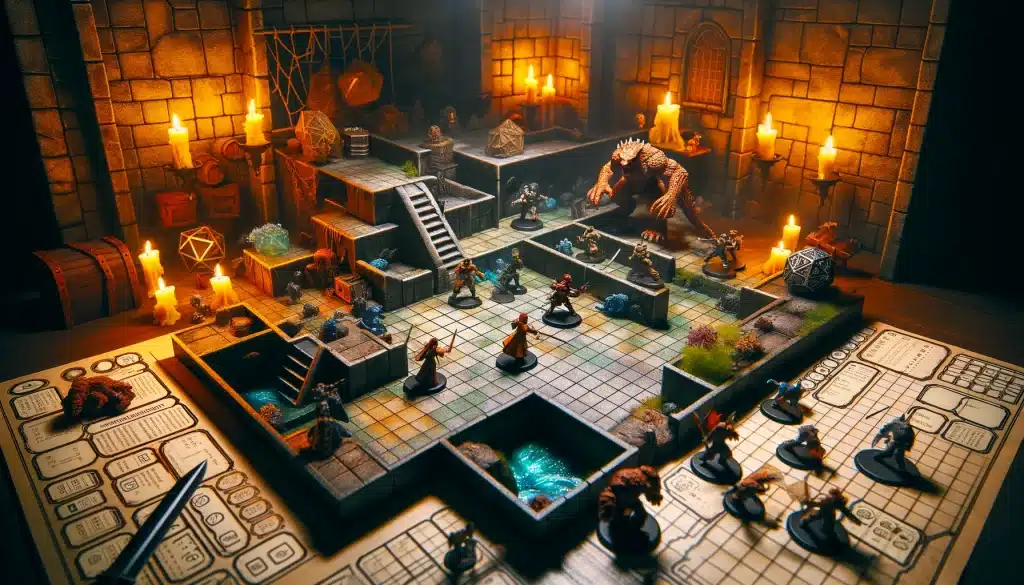
Dungeons & Dragons 4th Edition
In 2008, Dungeons & Dragons 4th Edition brought a bold new approach to the game. This edition focused heavily on tactical combat and streamlined gameplay, aiming to create a more dynamic and balanced experience. The introduction of the powers system, which gave characters a set of abilities they could use in combat, was a significant departure from previous editions.
Dungeons & Dragons 4th Edition received mixed reviews from the D&D community. While some appreciated the focus on balance and tactical play, others felt it moved too far from the traditional role-playing elements that defined the game. Despite the divisive reception, 4th Edition introduced concepts that would influence future editions and provided a fresh take on the D&D experience.
Overview
Released in 2008, Dungeons & Dragons 4th Edition represented a significant shift in the game’s design philosophy. It introduced a focus on tactical combat and streamlined gameplay, aiming to create a more dynamic and balanced experience.
Key Features
4th Edition brought several major innovations:
- Tactical Combat: Emphasized grid-based combat with clear, tactical options for players.
- Powers System: Introduced a new system where characters had a set of powers they could use in combat, similar to abilities in video games.
- Simplified Mechanics: Streamlined many aspects of the game to make it more accessible to new players.
Reception
4th Edition received mixed reviews from the D&D community. While some appreciated the focus on balance and tactical play, others felt it moved too far from the traditional role-playing elements. Despite this, it introduced concepts that would influence future editions, so you can’t hate it too much. Well, you can, but… haha…
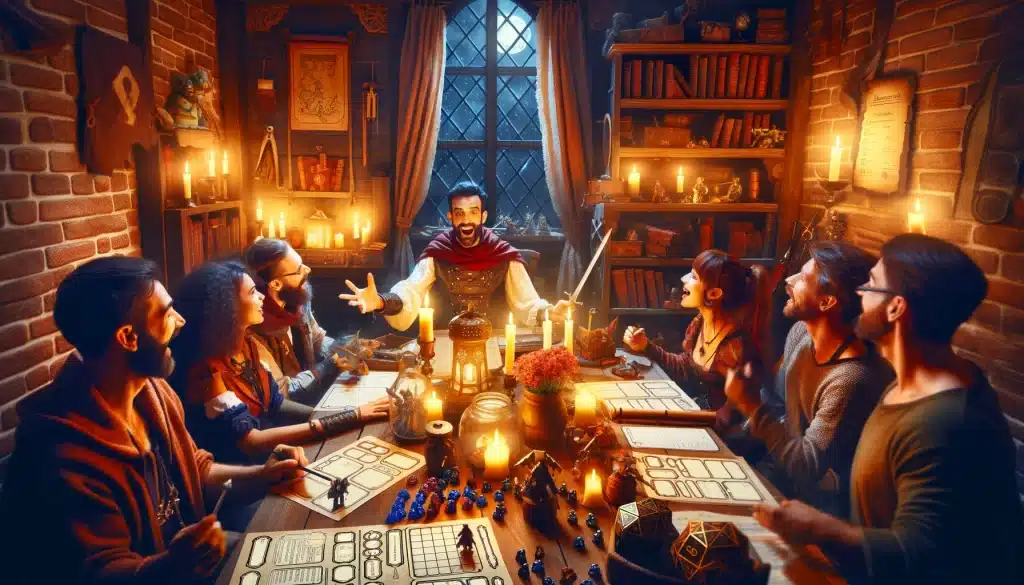
Dungeons & Dragons 5th Edition
Launched in 2014, Dungeons & Dragons 5th Edition (often referred to as 5e) aimed to combine the best elements of previous editions while making the game more accessible and focused on storytelling. This edition has been widely praised for its balance between simplicity and depth, attracting a new generation of players and revitalizing the D&D community.
Dungeons & Dragons 5th Edition introduced streamlined rules, making it easier for new players to learn the game while retaining enough depth for veteran players. The emphasis on storytelling and character development encouraged creative play, while the bounded accuracy system ensured that all levels of play remained challenging and engaging. As a result, 5th Edition has become the most popular edition of Dungeons & Dragons to date.
Overview
Launched in 2014, Dungeons & Dragons 5th Edition (often referred to as 5e) aimed to combine the best elements of previous editions while making the game more accessible and focused on storytelling. It has been widely praised for its balance between simplicity and depth.
Try my AI Tabletop RPG generators...and an extensive library of content!
Key Features
5th Edition introduced several key features:
- Streamlined Rules: Simplified mechanics to make the game more approachable for new players while retaining depth for veterans.
- Emphasis on Role-Playing: Encouraged storytelling and character development, with mechanics supporting creative play.
- Bounded Accuracy: A system that ensured all levels of play remained challenging and engaging by capping bonuses and modifiers.
Success
5th Edition has been a resounding success, revitalizing the D&D community and attracting a new generation of players. Its balanced approach to gameplay and storytelling has made it the most popular edition of Dungeons & Dragons to date.
One D&D (D&D 6th Edition)
Announced in 2021, One D&D (commonly referred to as D&D 6th Edition) represents the latest evolution in the Dungeons & Dragons franchise. Building on the success of 5th Edition, One D&D aims to further modernize the game and enhance the overall gameplay experience. This edition seeks to unify the player base by offering a seamless transition from previous editions and incorporating community feedback.
One D&D introduces several innovative features designed to keep the game fresh and engaging. Enhanced digital integration, modular mechanics, and expanded customization options are just a few of the advancements players can expect. By focusing on inclusivity and adaptability, One D&D aims to appeal to both veteran players and newcomers, ensuring that Dungeons & Dragons continues to thrive in the modern era.
Key Features
One D&D introduces several innovative features designed to modernize the game:
- Digital Integration: Enhanced digital tools and resources, including virtual tabletop support and an integrated character builder.
- Modular Mechanics: Flexible rules modules allowing for customization of gameplay style, catering to both narrative-driven and tactical play.
- Expanded Customization: Greater options for character creation and development, emphasizing player choice and diversity.
- Streamlined Rules: Further simplification and clarification of rules to maintain accessibility while deepening the game’s strategic elements.
Goals and Vision
The vision for One D&D is to create an inclusive, adaptable, and immersive gaming experience. By integrating advanced digital tools and maintaining a strong emphasis on storytelling, this edition aims to appeal to both veteran players and newcomers. The goal is to ensure that Dungeons & Dragons continues to thrive as a dynamic and engaging game, keeping pace with modern gaming trends and player expectations.
History of DND Editions
Each edition of Dungeons & Dragons has contributed to the game’s rich history, offering unique features and experiences. Whether you prefer the foundational simplicity of OD&D, the detailed complexity of AD&D, the flexibility of 3rd and 3.5 Editions, the tactical focus of 4th Edition, or the balanced storytelling of 5th Edition, understanding these differences helps you appreciate the evolution of this beloved game. No matter which edition you play, D&D continues to inspire imagination and adventure for players around the world.

